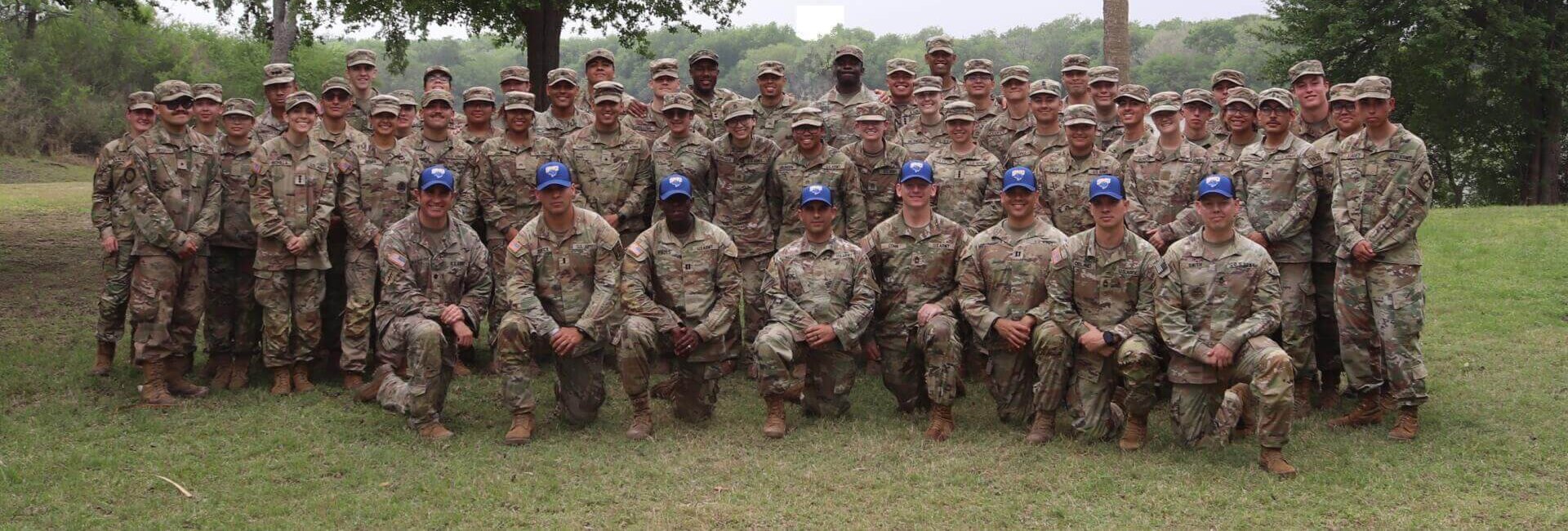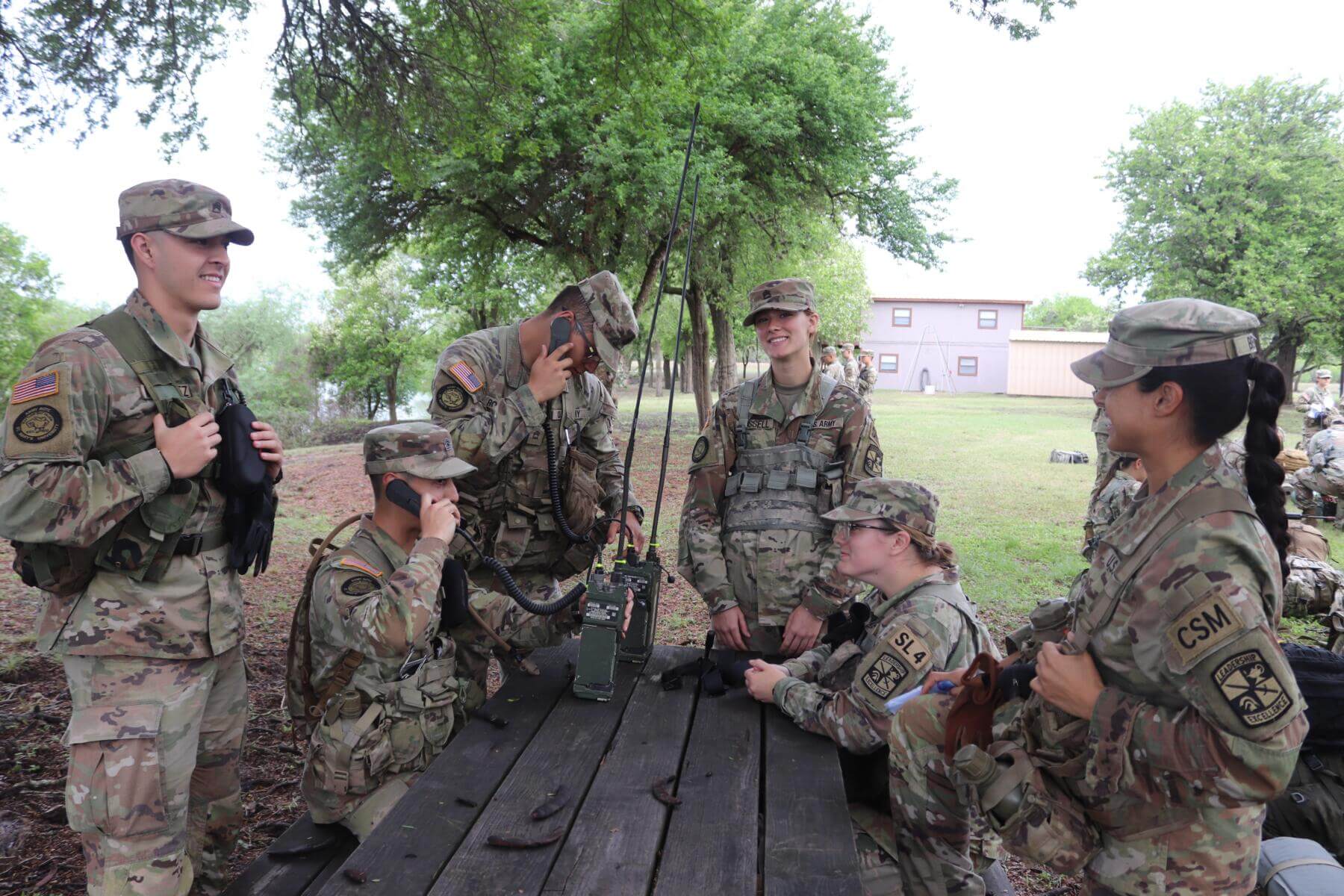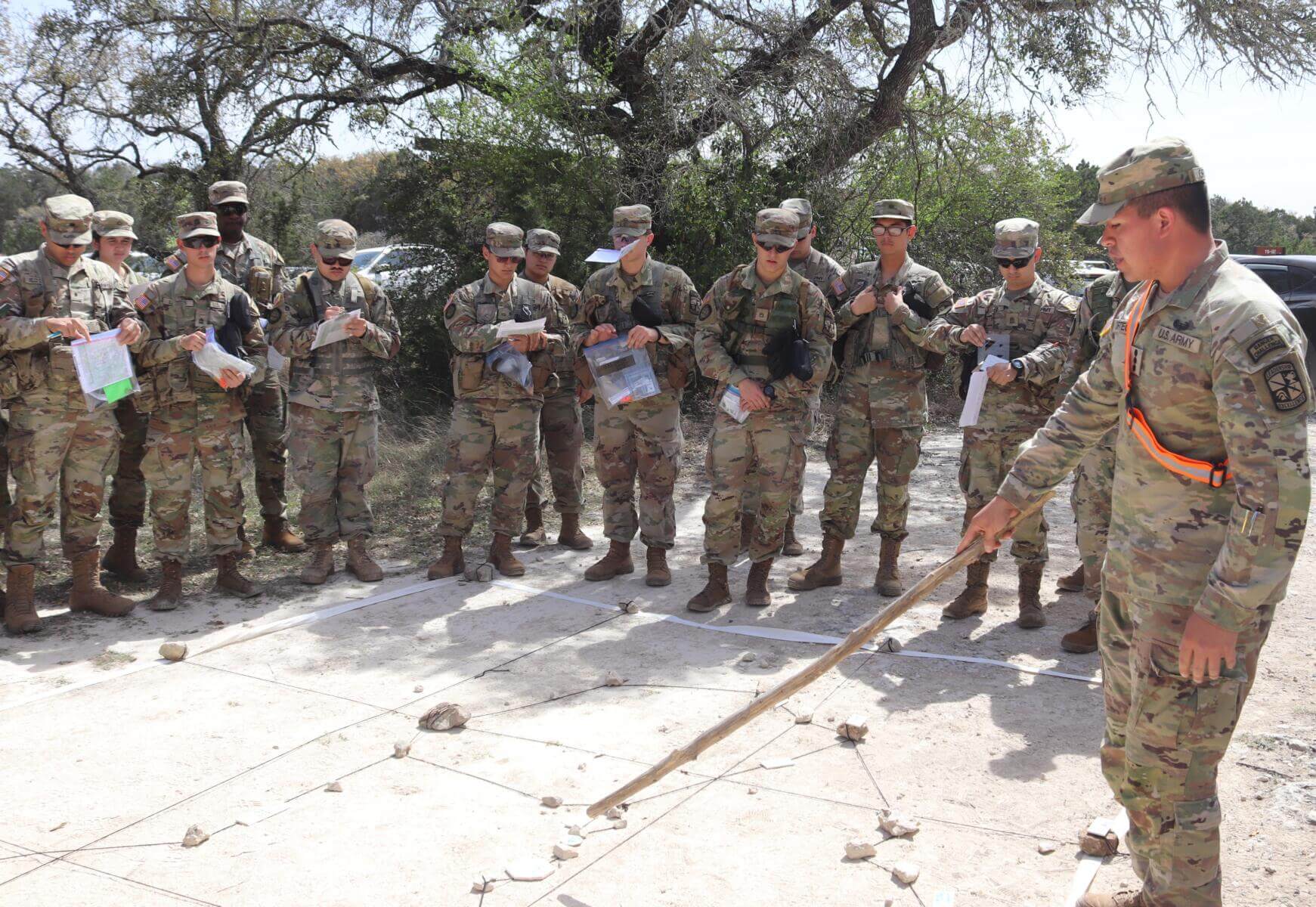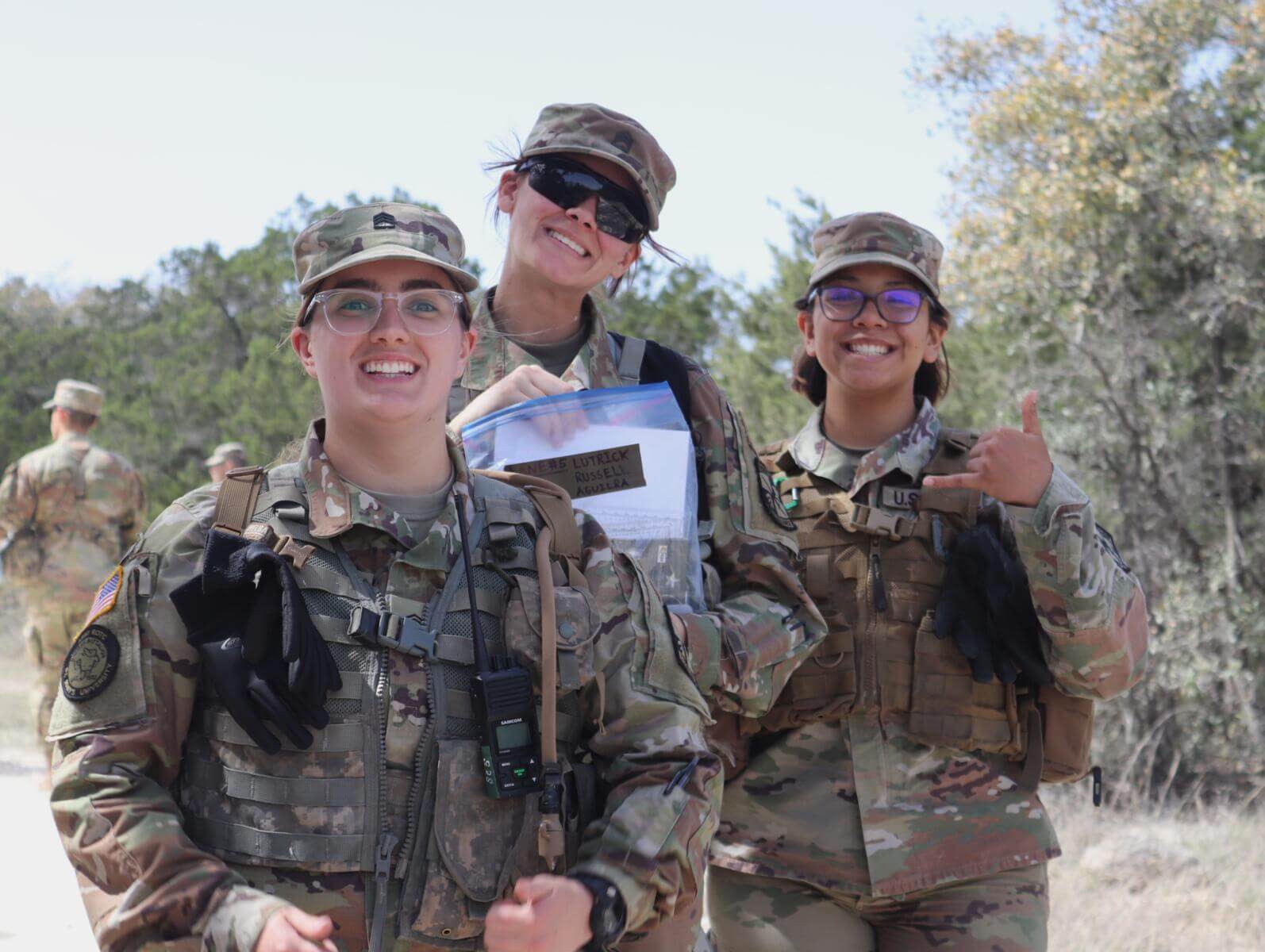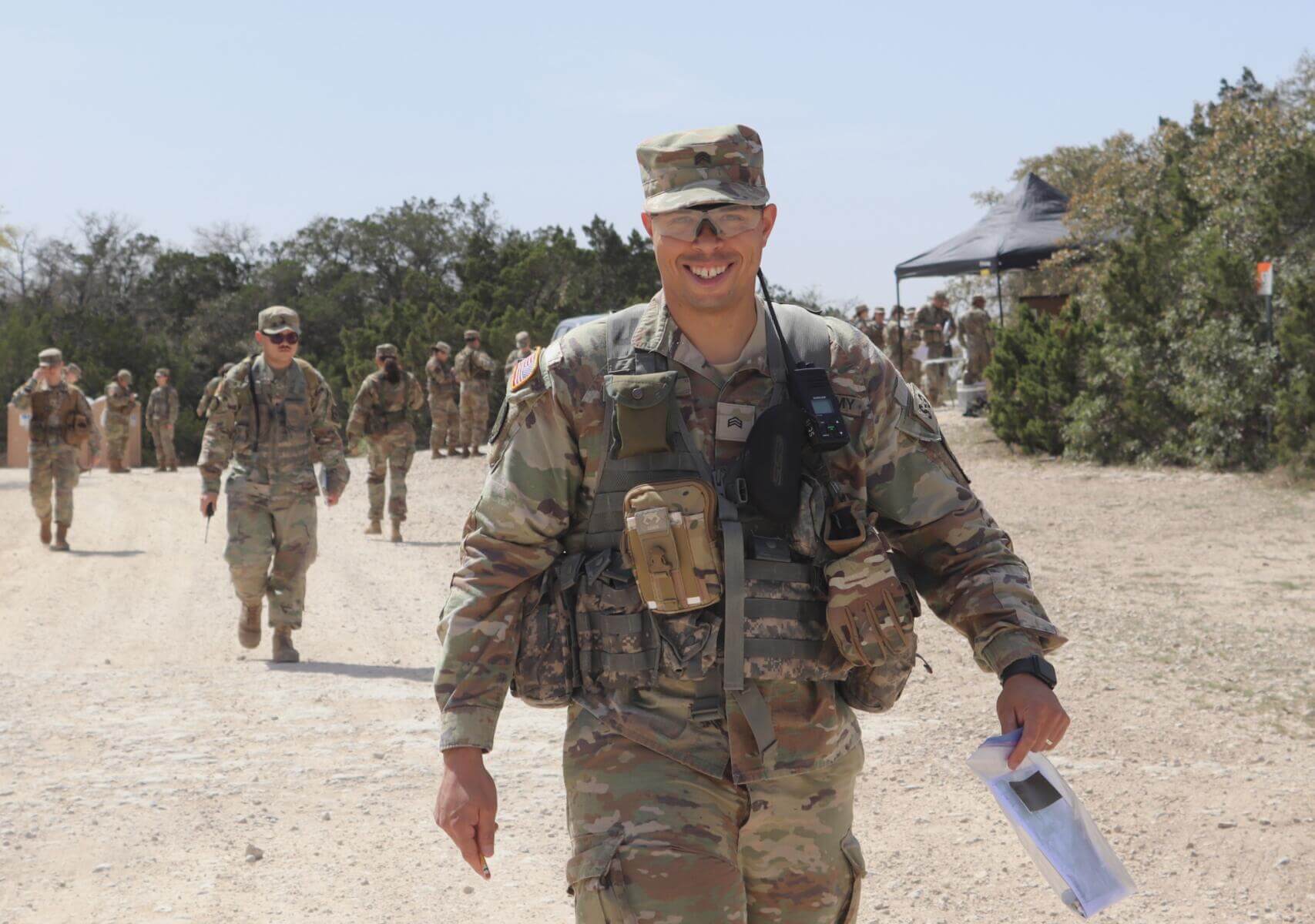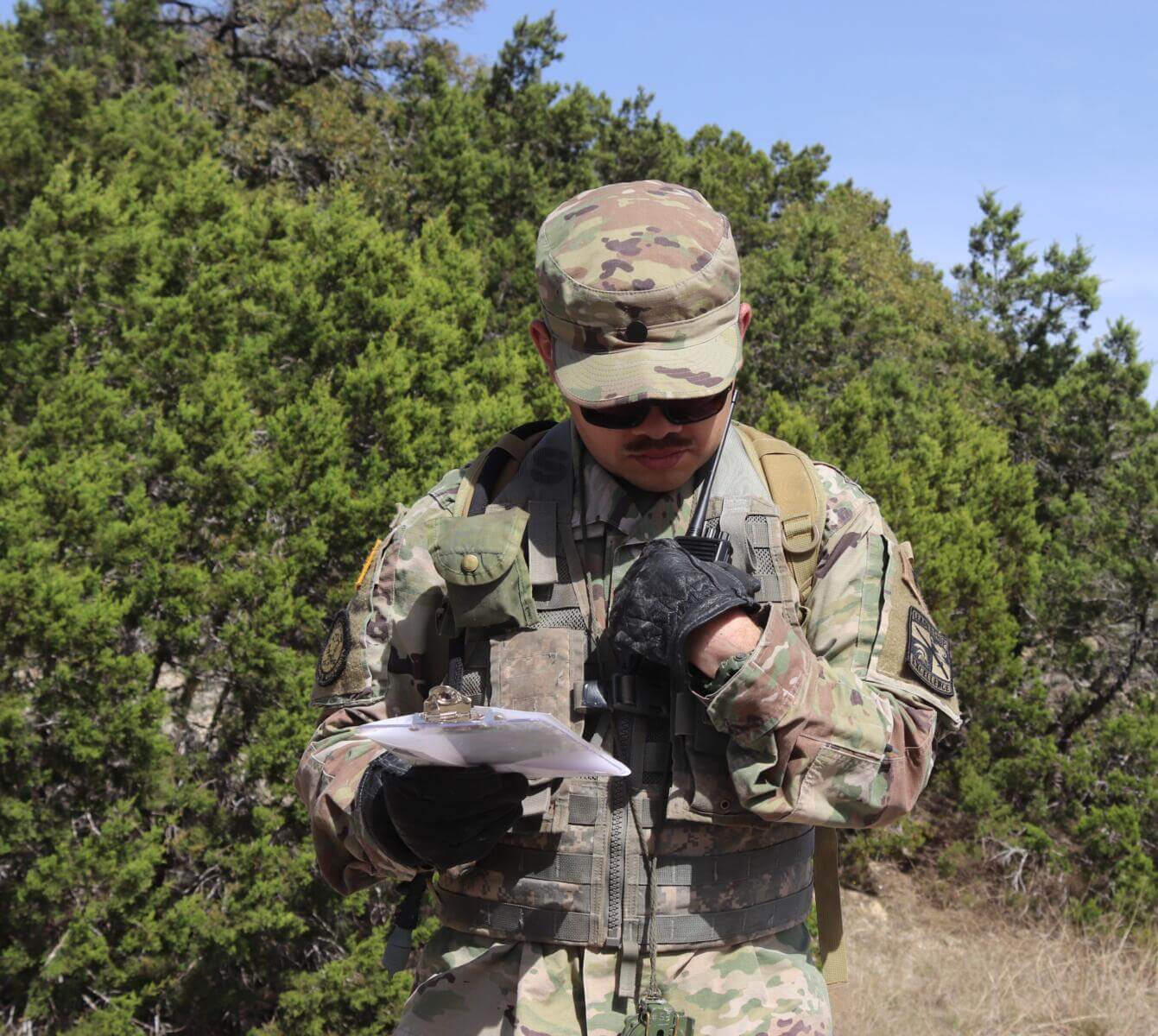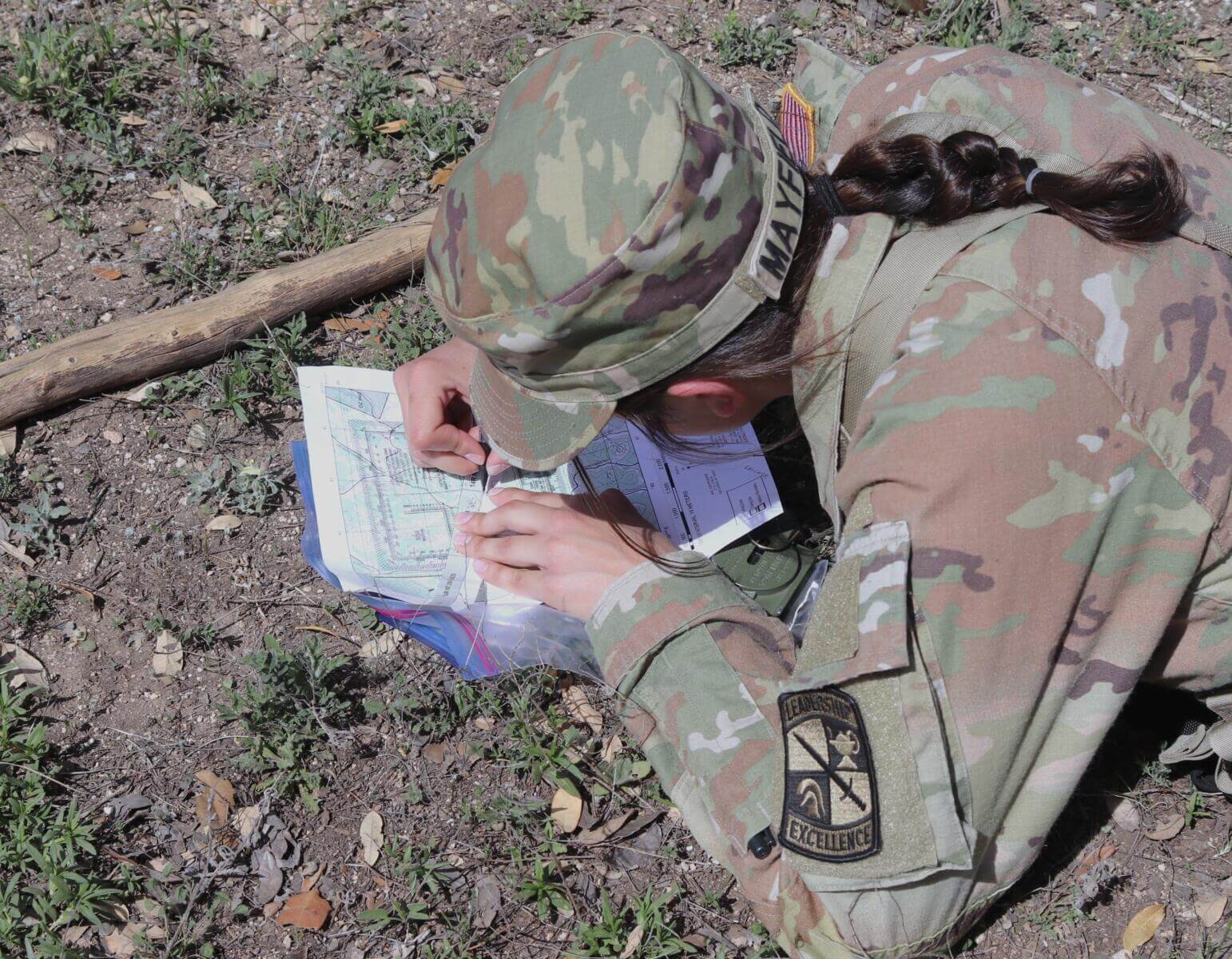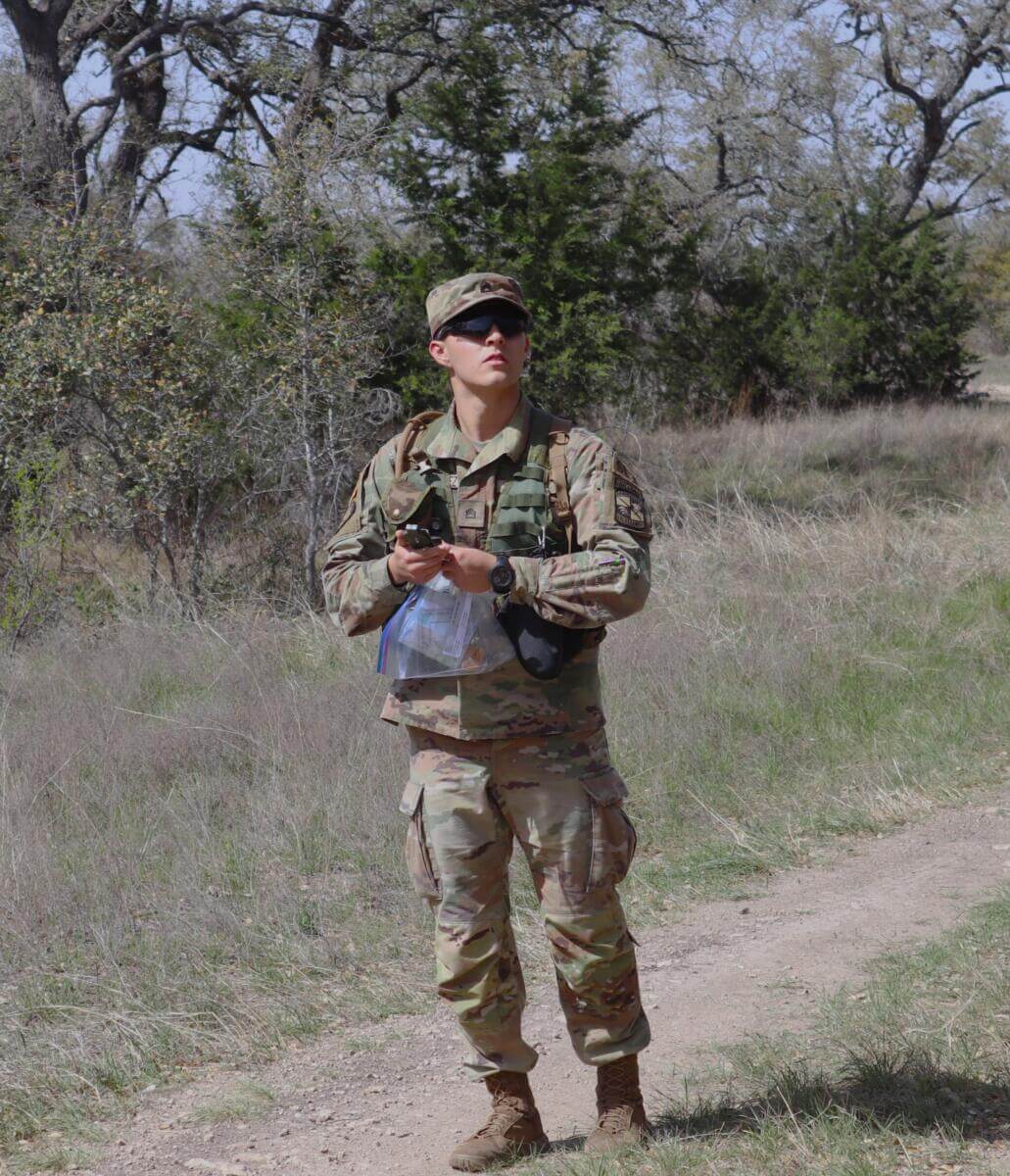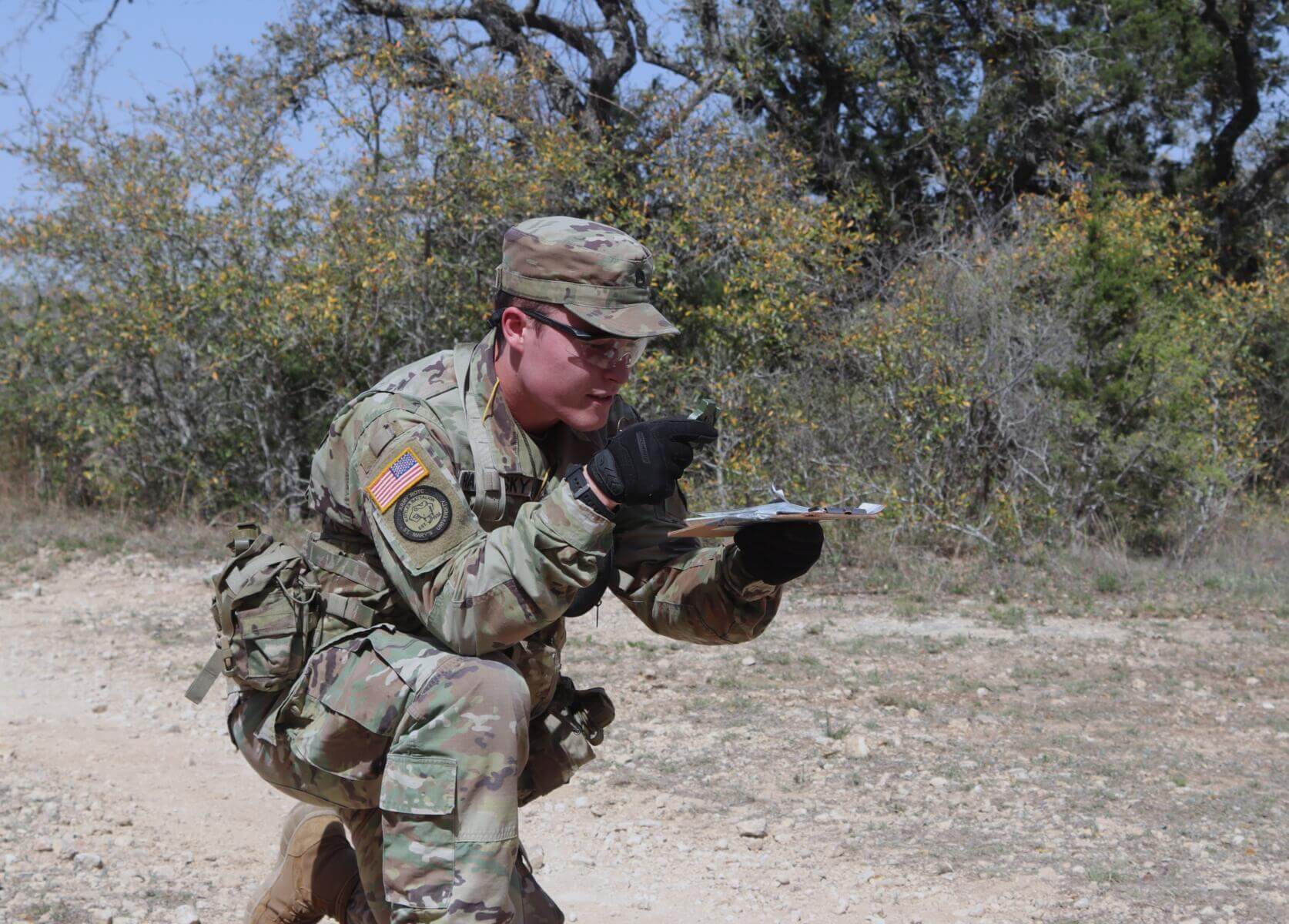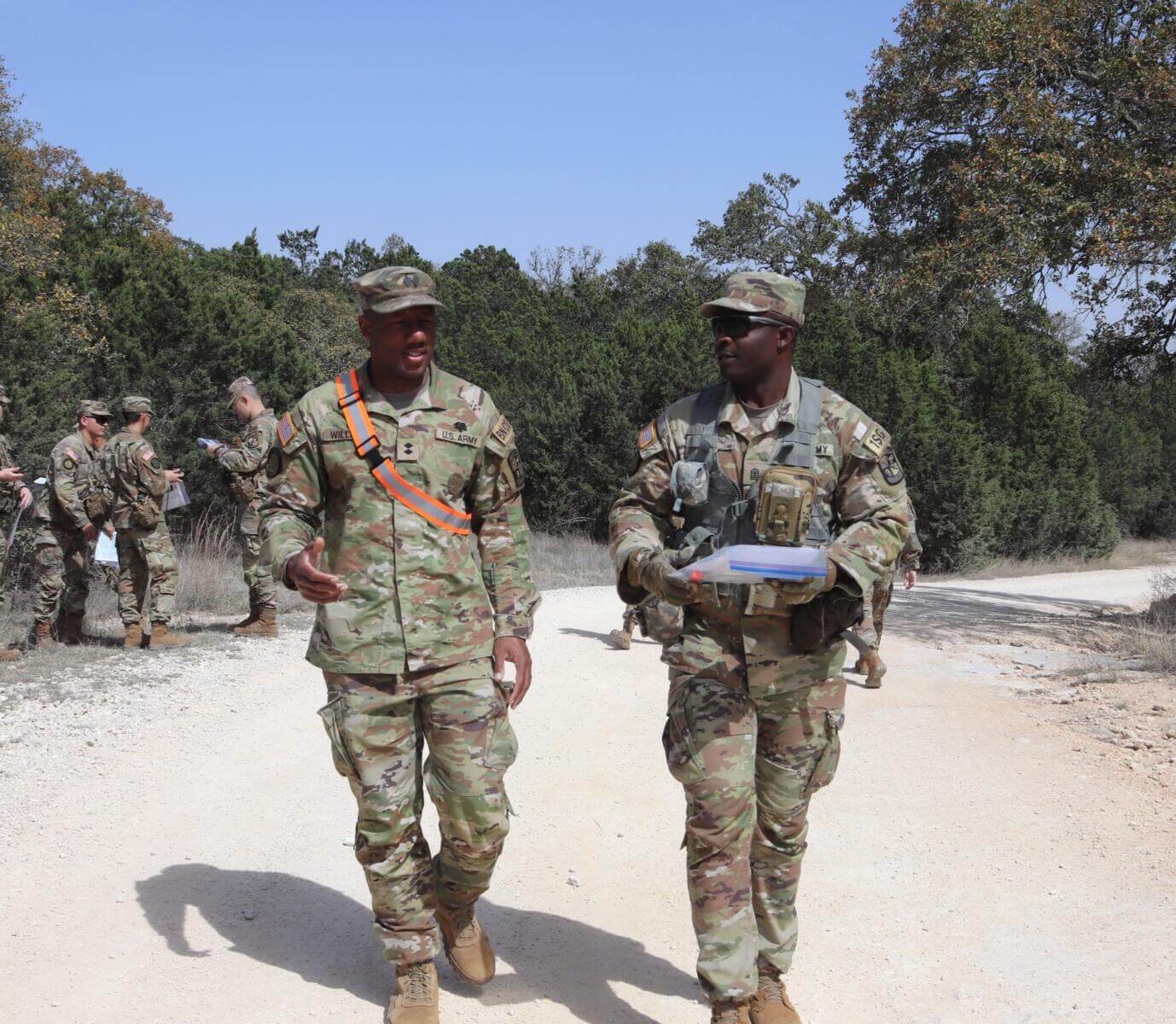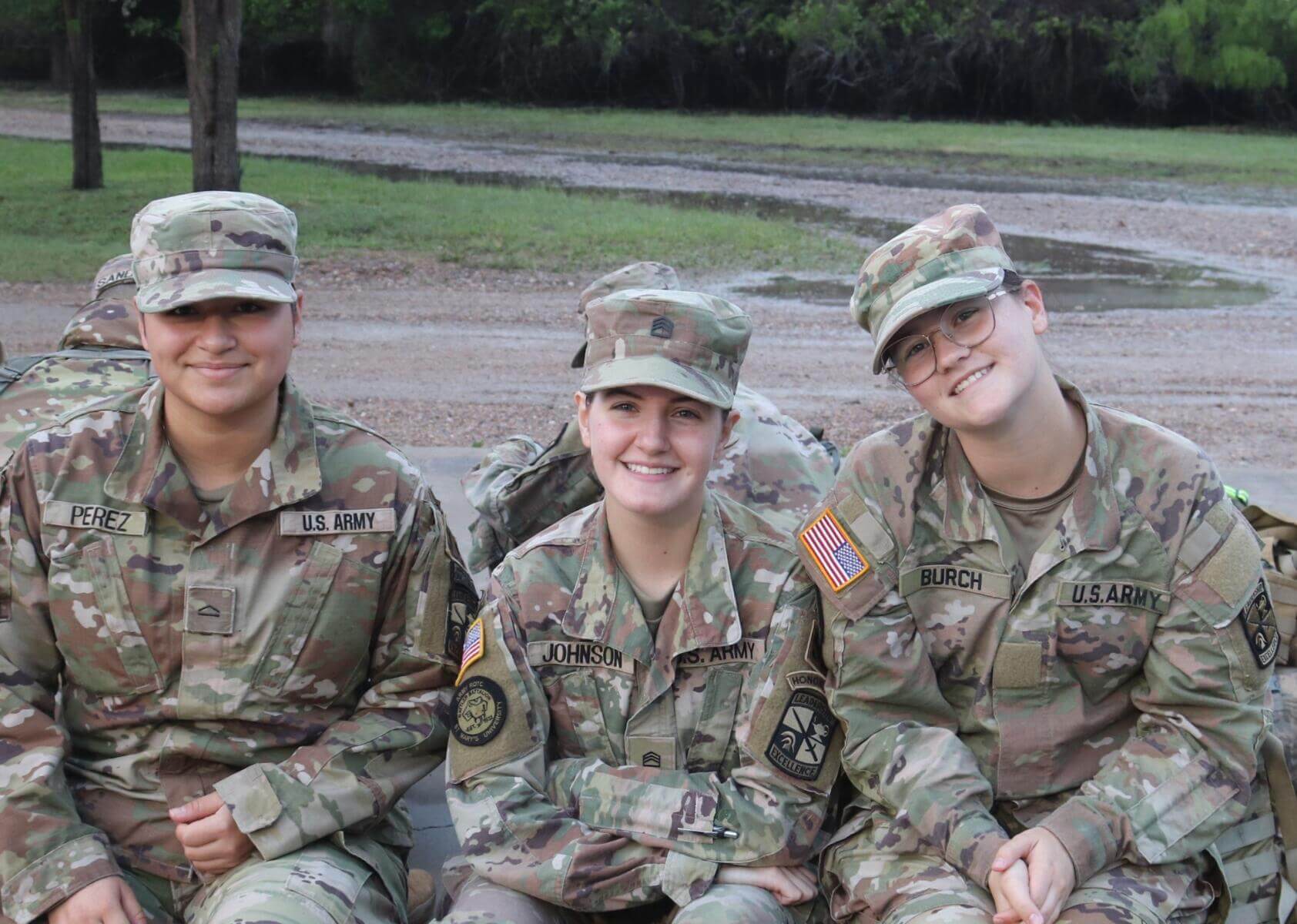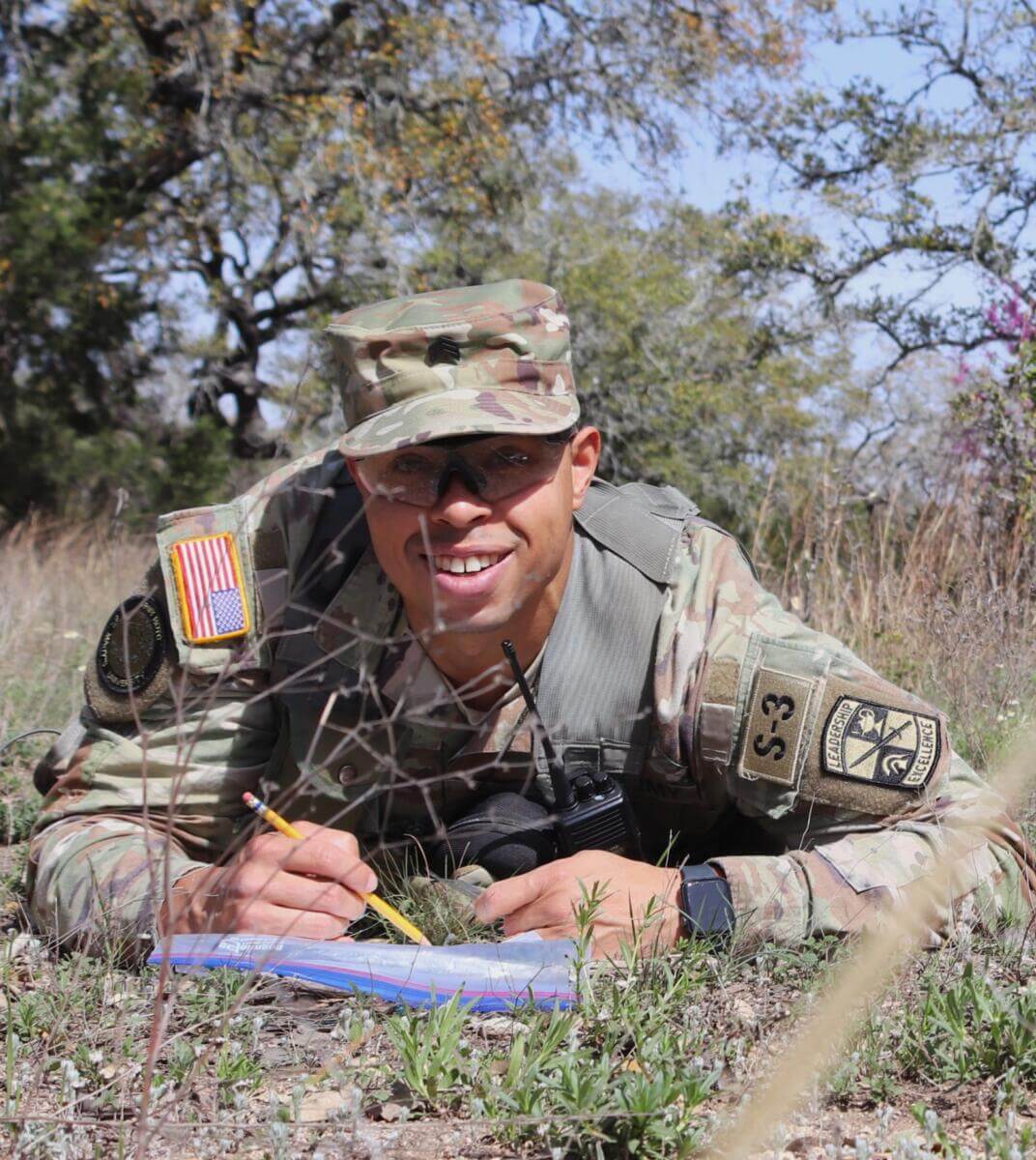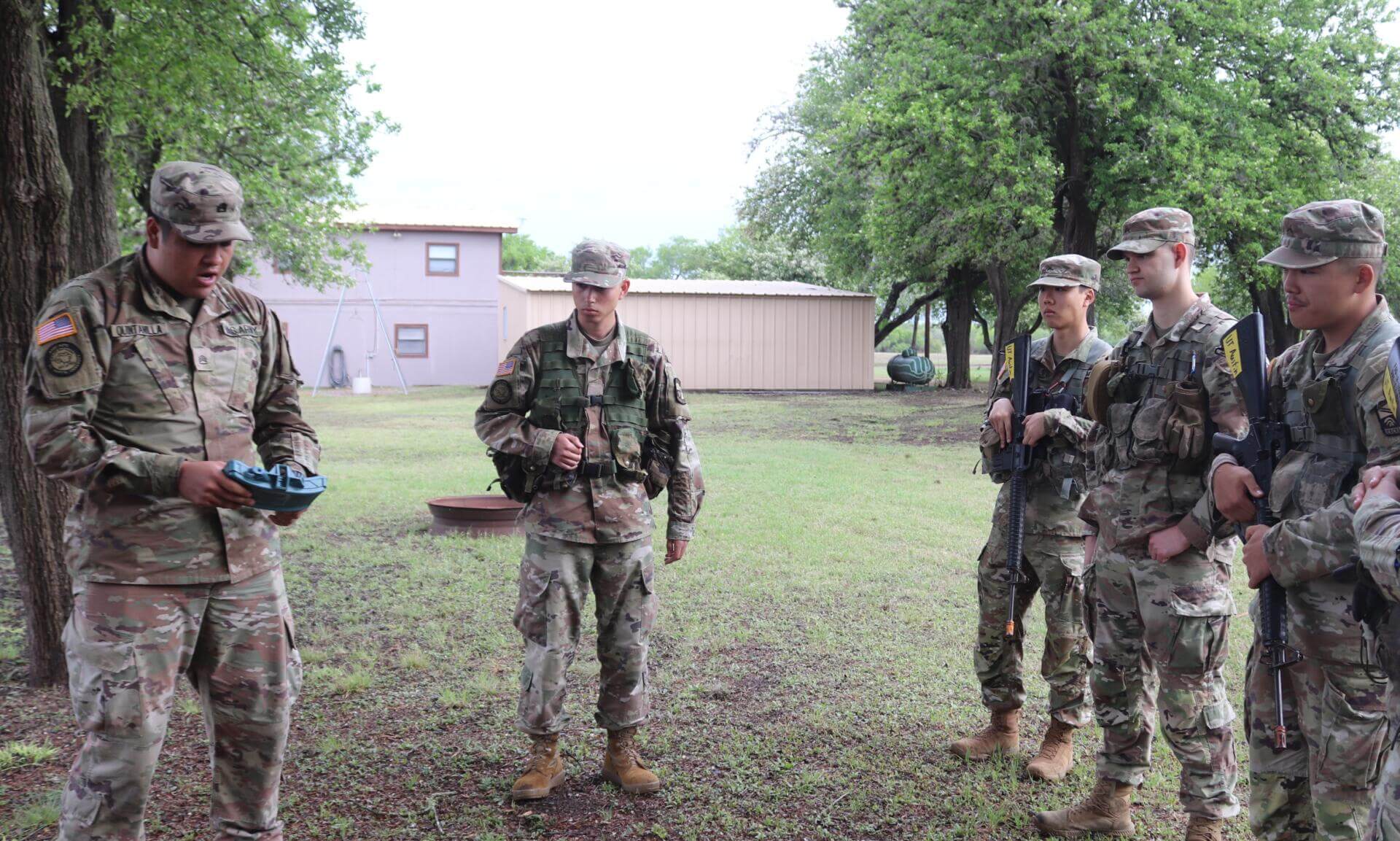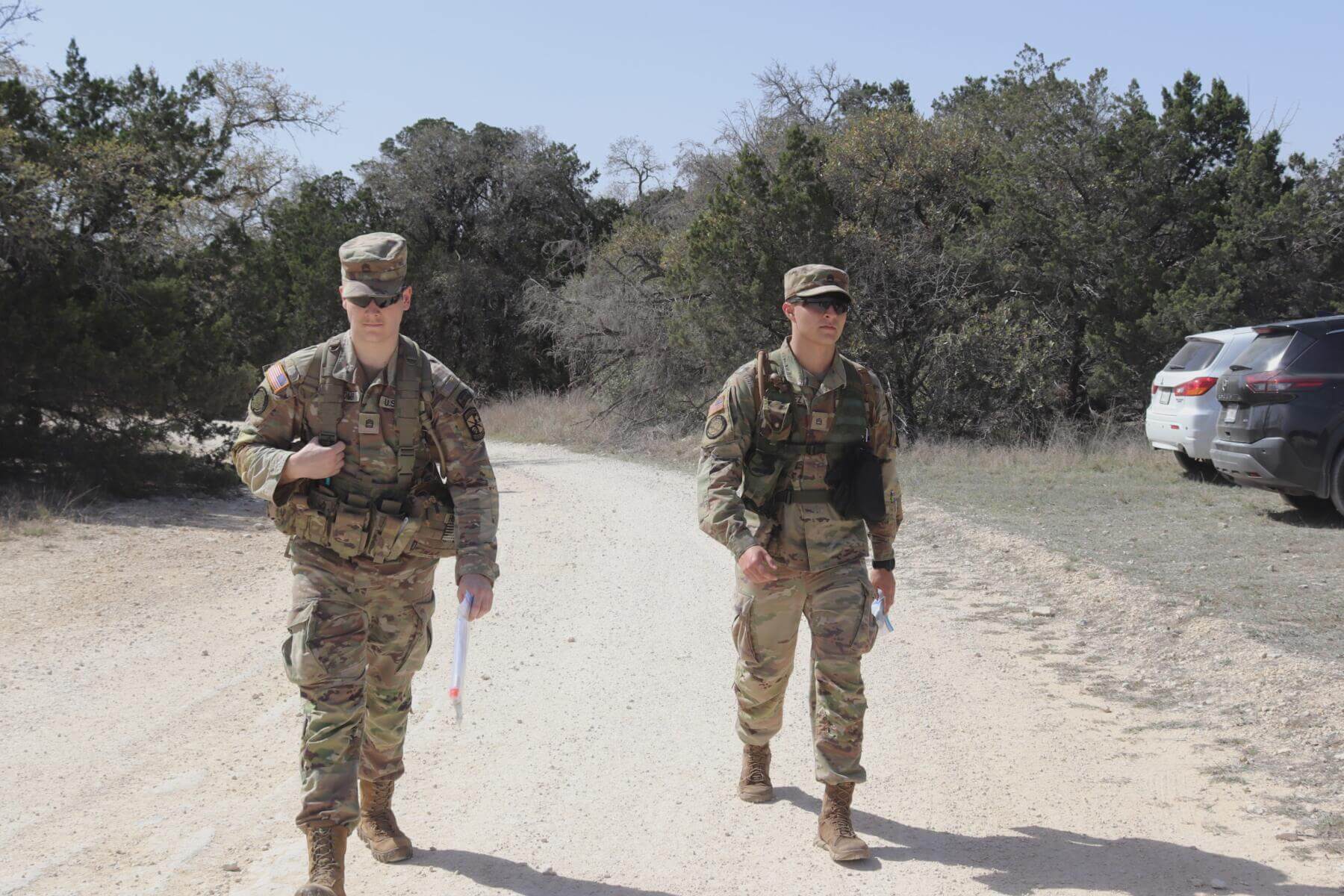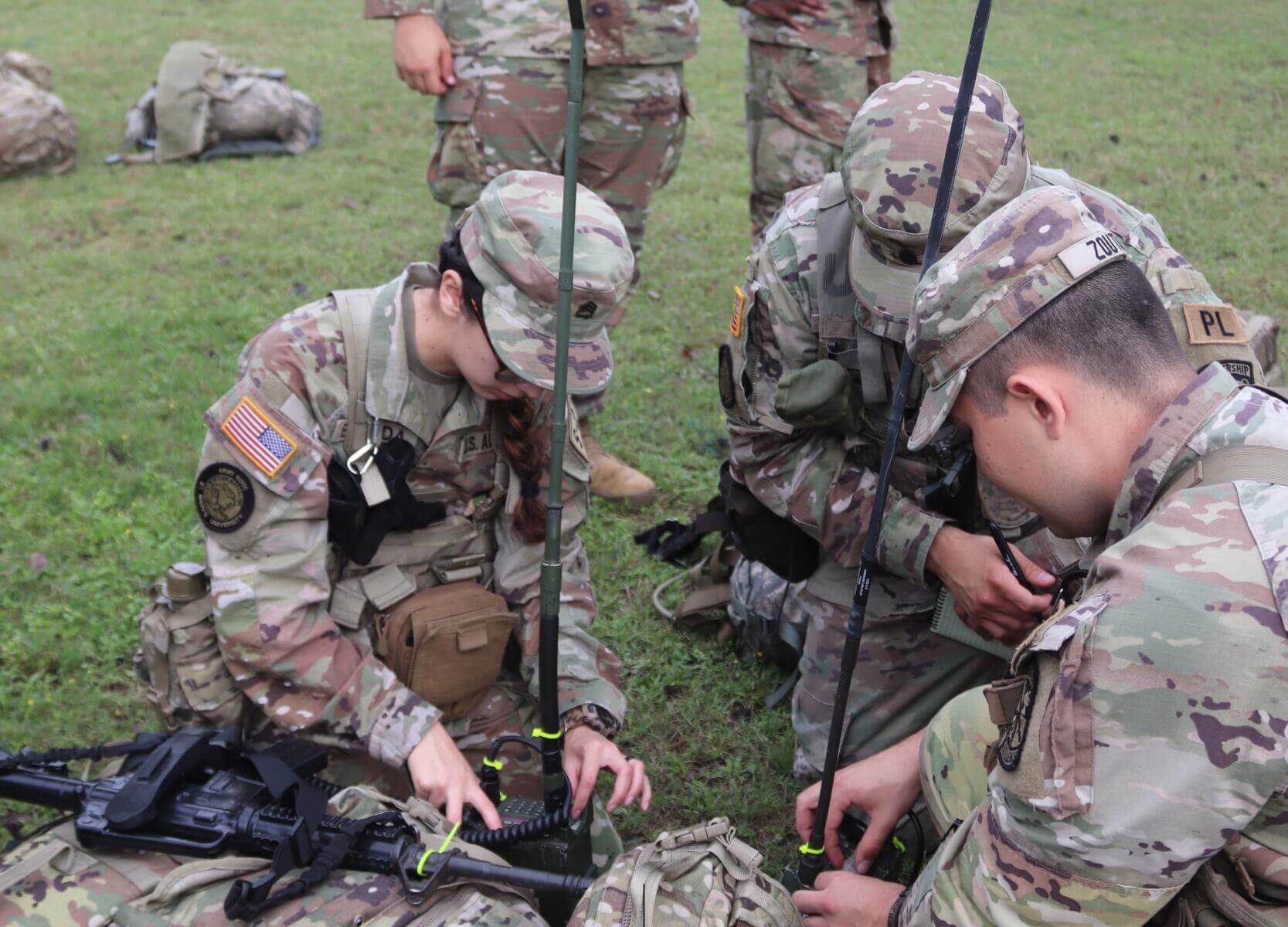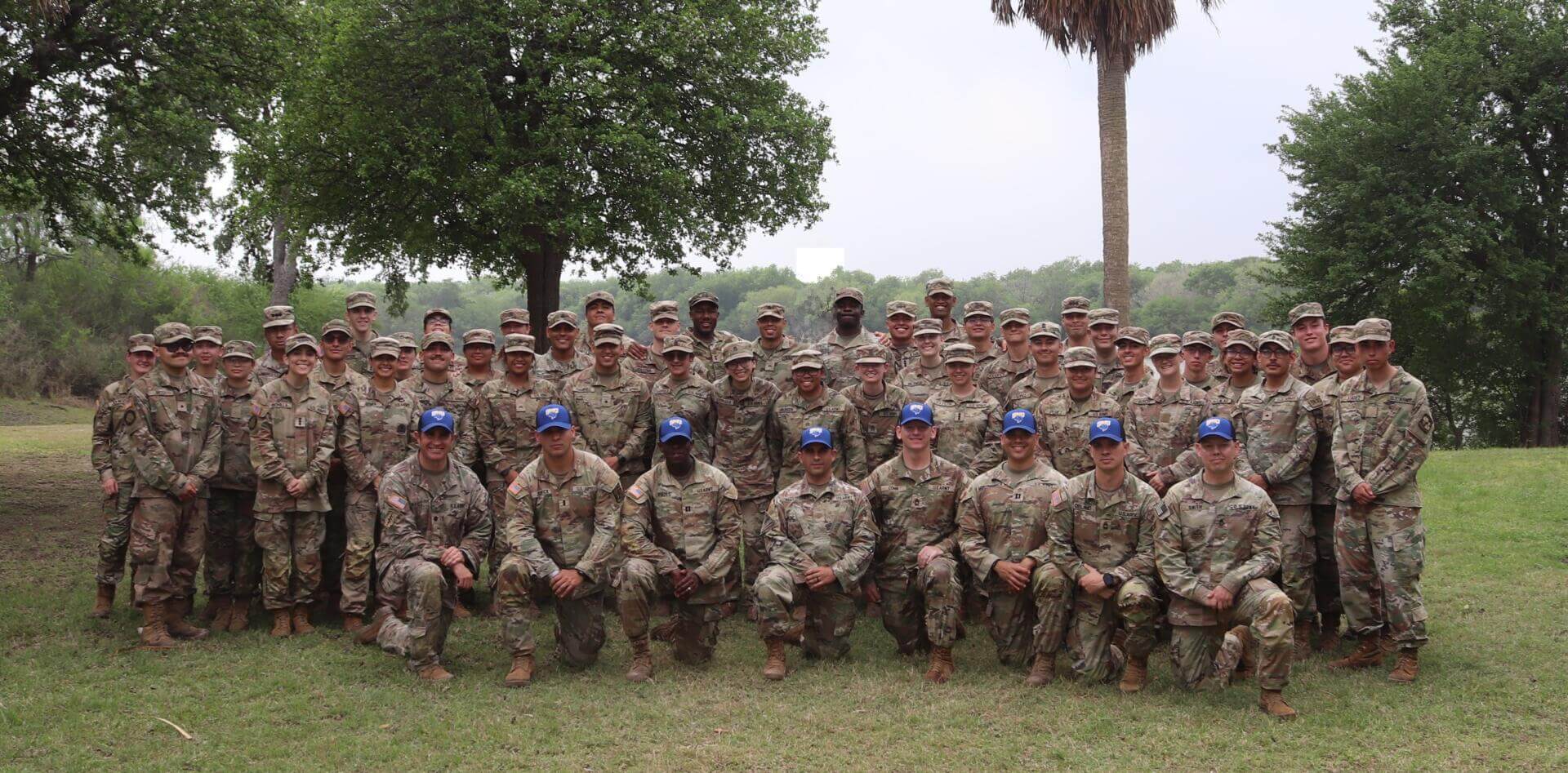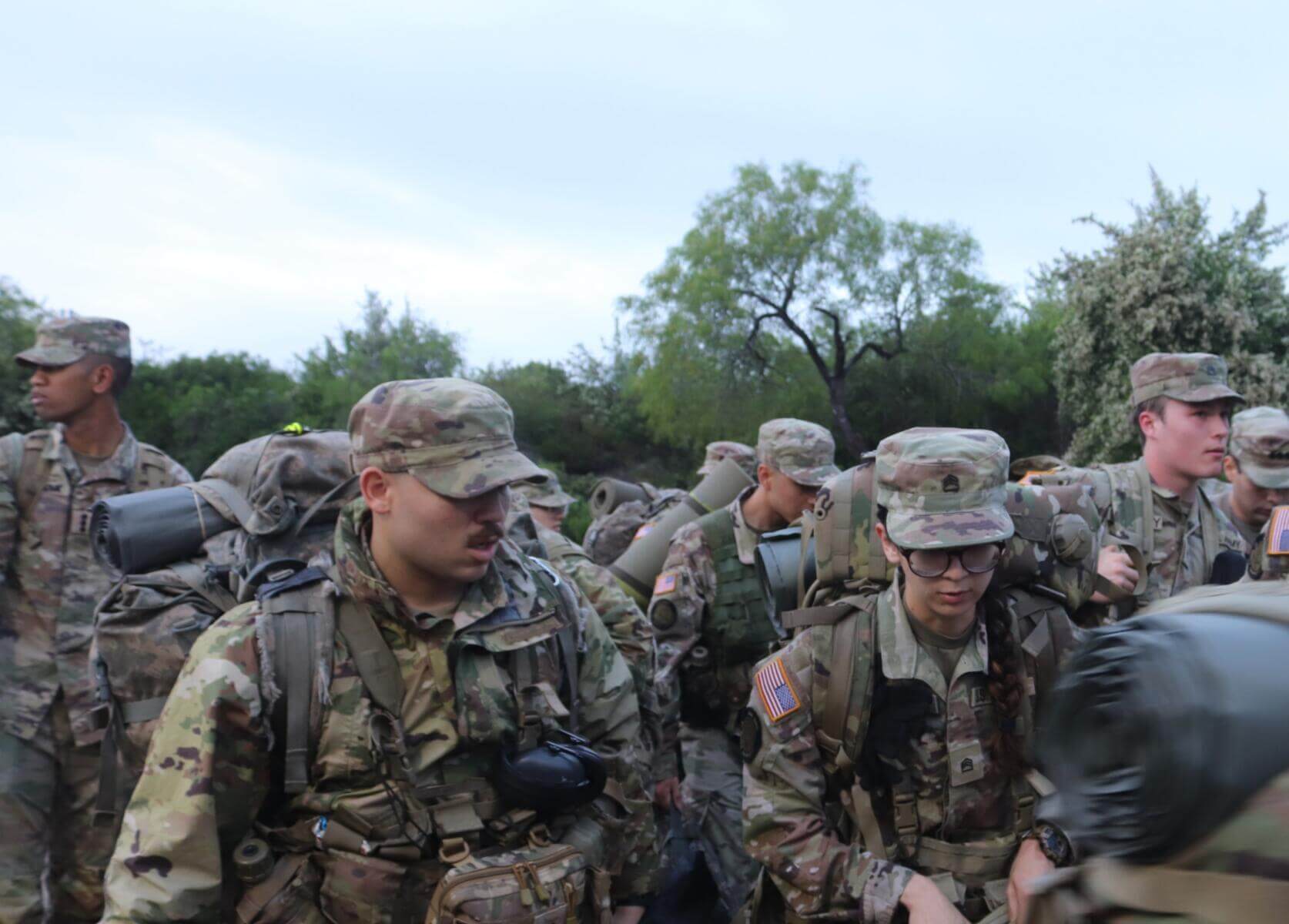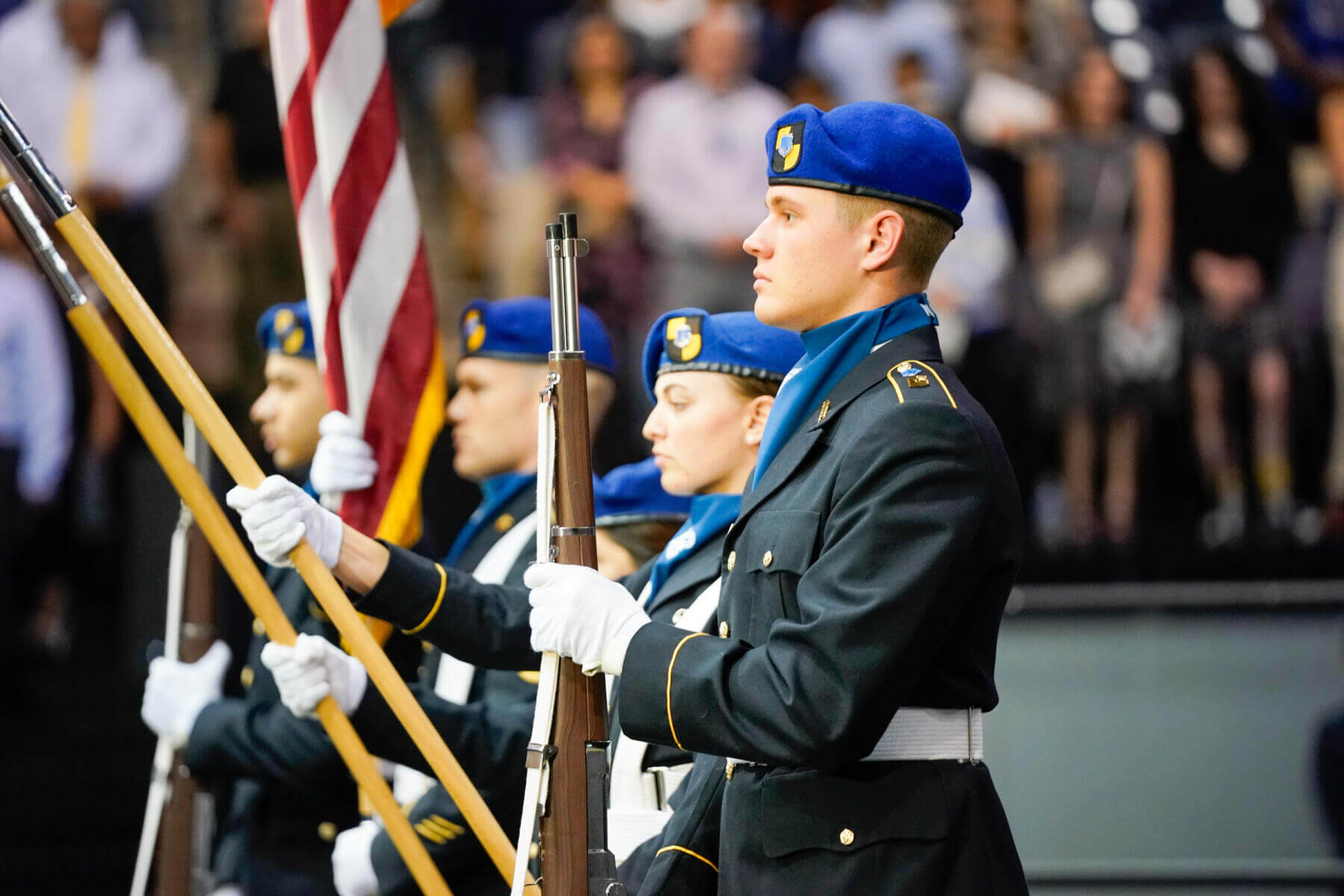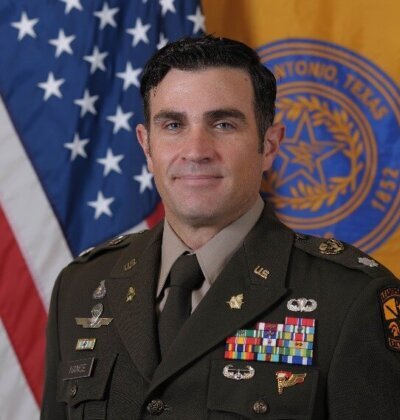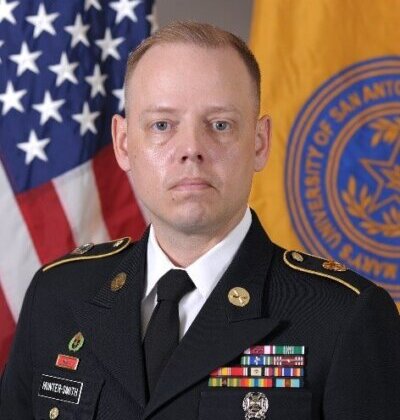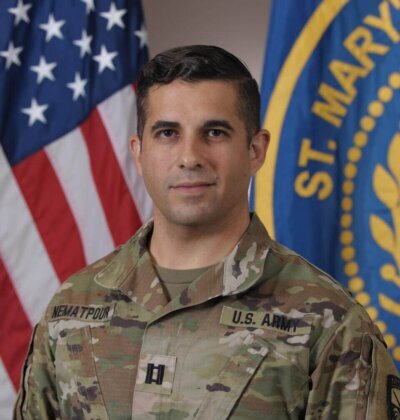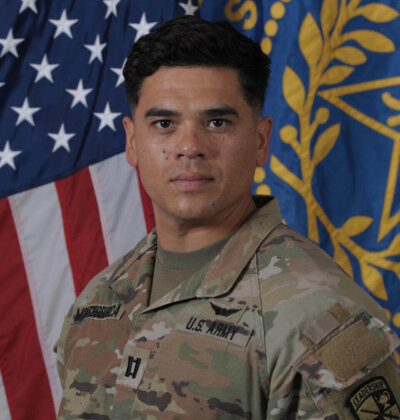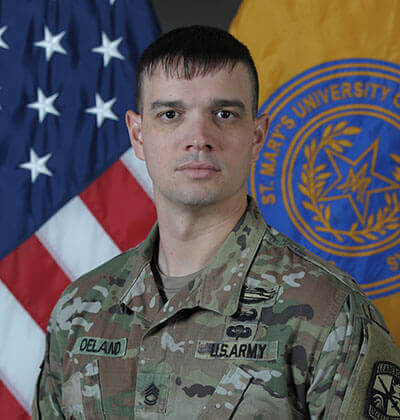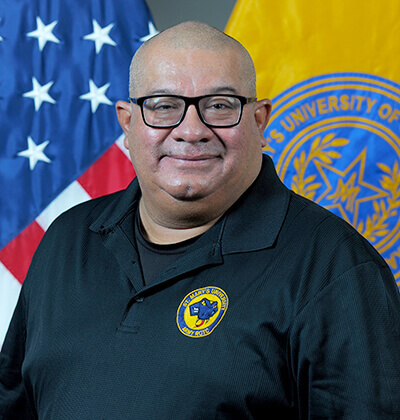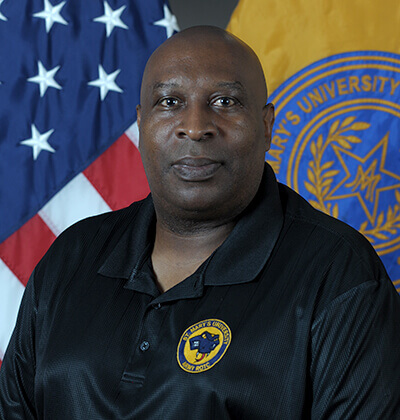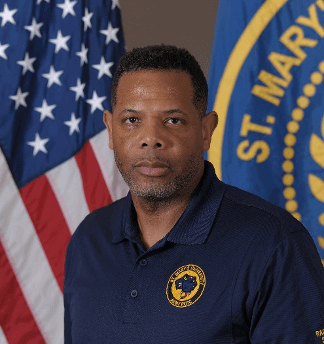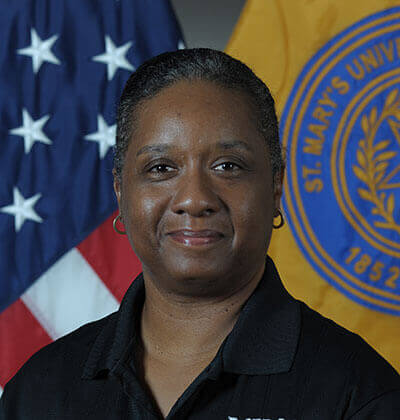Army ROTC at St. Mary’s
Army ROTC is a college elective that focuses on leadership and management training. St. Mary’s Army ROTC offers students the opportunity to learn and grow in a variety of ways. The program of instruction challenges each cadet in the battalion in both indoor and outdoor settings; cadets participate in classroom instruction while also engaging in world-class physical fitness training, land navigation, marksmanship, rappelling and other military activities.
Cadets learn management and leadership skills not available in other University programs. Army ROTC is a training ground for tomorrow’s leaders. Although ROTC is a military-oriented program, the value of its training is recognized by business leaders. Studies have shown that ROTC graduates have a definite advantage when seeking employment in the civilian sector of the economy.
Is the Army for You?
Any student can try Army ROTC for up to 2 years with no obligation while they work towards their degree*.
Just sign up for MS 100
in the fall!*At St. Mary’s University, University of Incarnate Word, Our Lady of the Lake University, St. Phillips College or Trinity University.
Join St. Mary’s ROTC
Learn more about the process and requirements in joining ROTC.
Scholarships
Each year hundreds of students attending colleges nationwide receive ROTC scholarships.
What is ROTC?
Want to learn more about the program that more than 40,000 students made a part of their total college experience last year? Let’s start with the basics. The St. Mary’s University Army Reserve Officer Training Corps program was established in 1932. The program has a long timeline of excellence and continues to be a training ground for tomorrow’s leaders.
Support St. Mary’s ROTC
Interested in supporting the St. Mary’s ROTC program? Use the button below, select that your contribution be directed to “Other,” and then enter ROTC in the box that appears.
Curriculum
Courses
Activities
Training
Programs
Simultaneous Membership
The Simultaneous Membership Program (SMP) allows you to participate in ROTC and enlist in the Army National Guard or Army Reserve at the same time, provided a vacancy exists in either a Guard or Reserve unit. While you’re still in college, you can gain valuable experience and earn extra income.
Green to Gold
The Army Green to Gold Program is designed for Active Duty enlisted Soldiers to pursue their Bachelors or Masters degrees and commission through ROTC. This program offers enlisted Soldiers three unique ways to earn a baccalaureate degree.
Military and Veterans
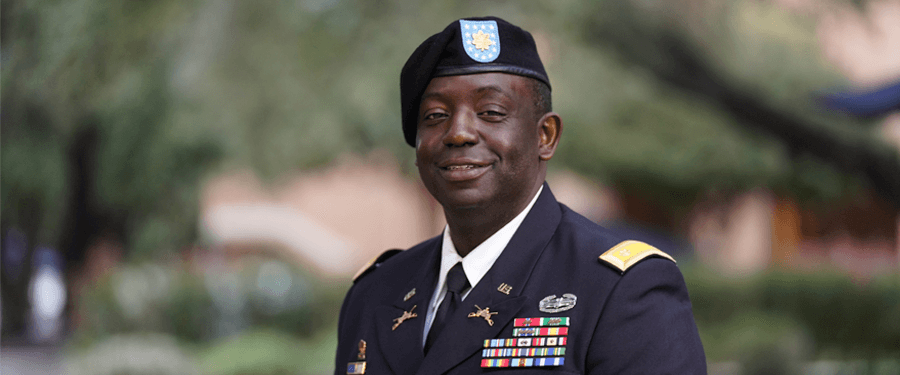
At St. Mary’s we take pride in helping our military service members, veterans, spouses and dependents reach their educational goals. St. Mary’s University’s long history in San Antonio has been interwoven with the military community for decades. Enrolling at St. Mary’s and taking advantage of your military and VA benefits is simple.
Frequently Asked Questions
Interested in joining ROTC at St. Mary’s? Consult this list of frequently asked questions. If you still have questions, contact our office.
Military Obligation FAQ
No. Enrolling in Army ROTC is not, strictly speaking, joining the Army. However, the primary purpose of the Army ROTC program is to produce officers, so you must agree
to serve as an Officer in the Army after graduation in order to complete the entire program, or if you have received an ROTC scholarship. Enrolling in the ROTC Basic Course (the first two years of college) does NOT obligate you to serve unless you have also received a scholarship, or completed contracting. The first two years of the program can be taken up as an elective course, if you are a non-scholarship recipient or non-contracted.Is enrolling in Army ROTC the same as joining the Army?
During the first two years, ROTC cadets have no military obligation (or the first year in the case of scholarship winners).
If you decide to continue with ROTC for a third and forth year, there is a military obligation after graduation.
Is there a military obligation during college?
Following graduation, ROTC cadets are required to serve in the active Army, Army National Guard or the Army Reserve. All scholarship students will be required to serve in the military for a period of eight years. This obligation may be fulfilled by serving two to four years on active duty, followed by four to six years service as citizen soldiers in the Army National Guard or Army Reserve, or by serving eight years in the Army National Guard or Army Reserve preceded by the period necessary to complete the active component resident officer basic course.
Non-scholarship students may serve three years on active duty and five years as citizen soldiers, or they may select or be selected to fulfill their total military obligation as citizen soldiers. If Reserve Forces duty is selected, graduates will serve a period of active duty necessary to complete the active component officer basic course and spend the remaining eight-year obligation in the Army National Guard or Army Reserve.
What is the military obligation after graduation from college?
Benefits FAQ
In college and after graduation, cadets find that the training and experience they receive are assets — whether pursuing an Army or civilian career. Employers place high regard on the management and leadership skills cadets acquire in the ROTC program.
ROTC experience looks great on a résumé. When cadets complete the ROTC course and graduate, they become commissioned officers in the U.S. Army.
How do students benefit from Army ROTC?
Simply, the leadership and management skills needed to become a U.S. Army officer or to have a successful civilian career.
During the Basic Course, your studies will include basic leadership development, basic military skills, adventure training and life skills.
During the Advanced Course, your studies will include advanced leadership skills, management skills, advanced tactics and Army ethics.
What can students expect to learn by taking ROTC?
Army ROTC is one of the only college programs that teach leadership. This training is invaluable for any career that involves leading, managing and motivating people or fostering teamwork. Army Officers are typically responsible for a Platoon or more of Soldiers and millions of dollars in equipment; this kind of management experience can be very attractive for post-Army employers. You will not only have a degree from one of the top universities in the country, but years of practical experience that you can bring with you into the civilian workforce. Over 75% of upper management in Fortune 500 companies are former junior military officers.
Is Army ROTC useful for a career outside of the Army?
Scholarship FAQ
Yes. Each year hundreds of students attending colleges nationwide receive ROTC scholarships. ROTC awards them to students studying science, engineering, nursing, business, as well as a variety of other majors.
ROTC scholarships are awarded on merit. Merit is exhibited in academic achievement and extracurricular activities, such as sports, student government or part-time work.
Does Army ROTC offer scholarships?
Anyone can enroll in ROTC, regardless of whether you are a scholarship winner or not. All ROTC books, supplies and equipment are furnished at no cost to you.
Can only scholarship winners enroll in ROTC?
Scholarship winners must serve for four years; non-scholarship Cadets who enroll in the ROTC Advanced Course must serve for three years. All cadets who successfully complete their degree path and successfully complete the ROTC program will commission as Second Lieutenant in the U.S. Army
What is my Army service obligation to pay back any scholarship benefits, or for enrollment in the ROTC Advanced Course?
Army ROTC offers two-, three- and four-year scholarships, which pay for either full tuition and fees or room and board (the student elects which they want). This includes a separate allowance for books, and a monthly stipend of up to $5000 a year. Army ROTC scholarships are not retroactive.
What kinds of scholarships are available in Army ROTC? Are any retroactive?
Career FAQ
The Army offers a wider range of career opportunities, in more places around the world, than any other U.S. military branch. Army ROTC Cadets are allowed to major in nearly all academic areas, we do not discriminate against any major.
Why should I choose Army ROTC over a different branch’s ROTC?
Prospective students can set up an appointment for you and your parents to sit down with our enrollment officer to discuss the program in full.
You can also call 210-346-3415 for general information or stop by our office located in Treadaway Hall on our Saint Mary’s University Campus. Go to our Contact section to email us today!
How do I learn more about the Army?
Army ROTC graduates are commissioned as U.S. Army Second Lieutenants. Following commissioning they will receive specialized training in one of 17 different Army branches. During their Army careers, they will receive regular professional training as they advance through the ranks, and they will have many opportunities for advanced leadership positions and post-graduate education.
What is the typical career path for an Army Officer? What career fields are available?
Yes. Cadets may choose to serve part-time in the U.S. Army Reserve or Army National Guard while pursuing a civilian career. To find out more about this option, go to our page on National Guard/Reserve Students.
Can I go into the Army Reserve or National Guard after graduation instead of the regular Army?
Course FAQ
ROTC cadets go directly to college where they earn their degree.
Is ROTC like boot camp?
ROTC is divided into phases.
The Basic Course teaches Army history, organization and structure. Techniques and principles of leadership and management are stressed throughout this phase.
The Advanced Course concentrates on tactical operations and military instruction, as well as advanced techniques of management, leadership and command.
What is the ROTC course comprised of?
ROTC cadets spend their time like typical college students. The course consists of a classroom lecture two times a week, a lab once a week, and one weekend per semester for a field training exercise (FTX).
How much time does ROTC take up weekly?
Army ROTC Cadets have the same lifestyles and academic schedules as any other college students. They are students first while they are here at STMU and we encourage them to be involved outside of ROTC.
How will this affect my daily life? Do Cadets experience normal college life?
Students in ROTC learn through a unique program that involves both classroom and live situations. For instance, an ROTC cadet might be found leading classmates through adventure training.
What makes ROTC different from regular college management courses?
St. Mary’s University is the host program-university. Our other program included universities in Rattler Battalion include: University of the Incarnate Word, Our lady of the Lake University, St. Phillips University, and Trinity University.
What universities are encompassed within Rattler Battalion?
Army ROTC normally involves one MS class, which includes an afternoon Wednesday lab, per week, with typically one FTX (Field Training Exercise) a semester.
The classes involve hands-on fieldwork, as well as classroom work, they are standard college classes that fit into a normal academic schedule.
These courses can help students with personal and academic decision-making while giving them the tools to exercise leadership in college life, prior to graduating and becoming an Officer.
What are the Military Science courses like? How will the class work help me? Will ROTC classes interfere with other studies?
Basic Camp– This four-week summer course at Fort Knox, KY is ONLY for students who come in to the program without having taken the first two years of military science classes.
Advanced Camp– All Cadets must attend this five-week summer course at Fort Knox, KY between their junior and senior years.
Will I be required to do anything during the summer?
Meet the ROTC Cadre
Contact Us
For more information contact Augustine “Chez” Varela.
ROTC Office
Treadaway Hallrotc@stmarytx.edu
210-436-3415Augustine “Chez” Varela
Recruiting Operations Officercvarela@stmarytx.edu
210-436-3011 Ext 1517Socials

